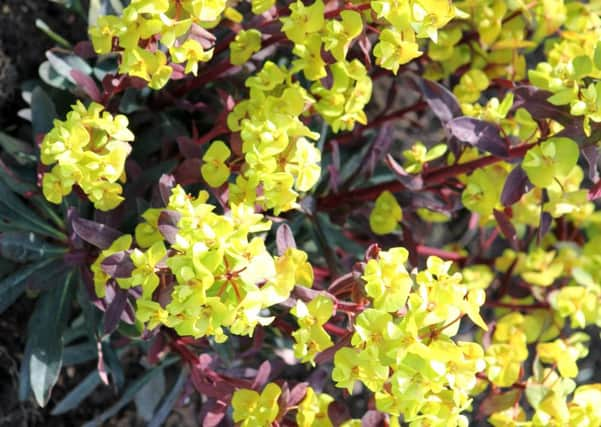Gardening: The border guards


No matter how hard and deep I dug, some managed to remain intact, well rooted and ready to flower for another year. How could I be so cruel, so heartless? I couldn’t, so I left them intact and even went out and bought a few more varieties.
Even though euphorbias – of which here are many – are relatively unsophisticated plants, they flower year in, year out, without asking for any help.
Advertisement
Hide AdAdvertisement
Hide AdSpurges (a common name) should be highly-valued artistes on the stage which will soon be filled with gaudier blooms fighting for applause. Produce a few weeks of flowers and then hide away for the rest of the year, and the accolades pour in; continue to stand firm and conscientiously remain at your station, but have blooms which can’t compete with the big, blowzy brigade, and you will be taken for granted.
That’s the spurges – a troupe which deserve to grace any gardening stage. They are so tough, so cheerful, so invasive – their tiny rosettes appear yards away from the parent plants.
But despite this ability to go where they shouldn’t, the hardy spurges are among those unsung heroes of the border. They are the little-praised workhorses, relatives of the vibrant poinsettias which make their mark every Christmas.
But while everybody recognises the vivid red bracts of the poinsettia, the eager-to-please spurges, which come in a variety of sizes and colours, rarely receive the recognition they deserve.
Advertisement
Hide AdAdvertisement
Hide AdAnd yet for many months of the year, they are the ones who hold together the perennial bed. In February and March, bracts start to appear and in April, the leaves are topped with lemon, pale green tints which defy description.
In May, the spurges dominate. In June, they still hold their heads above the rest, and it’s only come July that they are eventually pushed into the background.
Spurges are among the most tolerant and versatile plants available to the gardener. They take the rough with the smooth, the rich soil with the poor. No sunless corner is too dark for them – they will grow anywhere and defy all weathers and conditions.
Just be aware – when their stems are cut or broken, they release a white irritant sap. So, wear gloves.